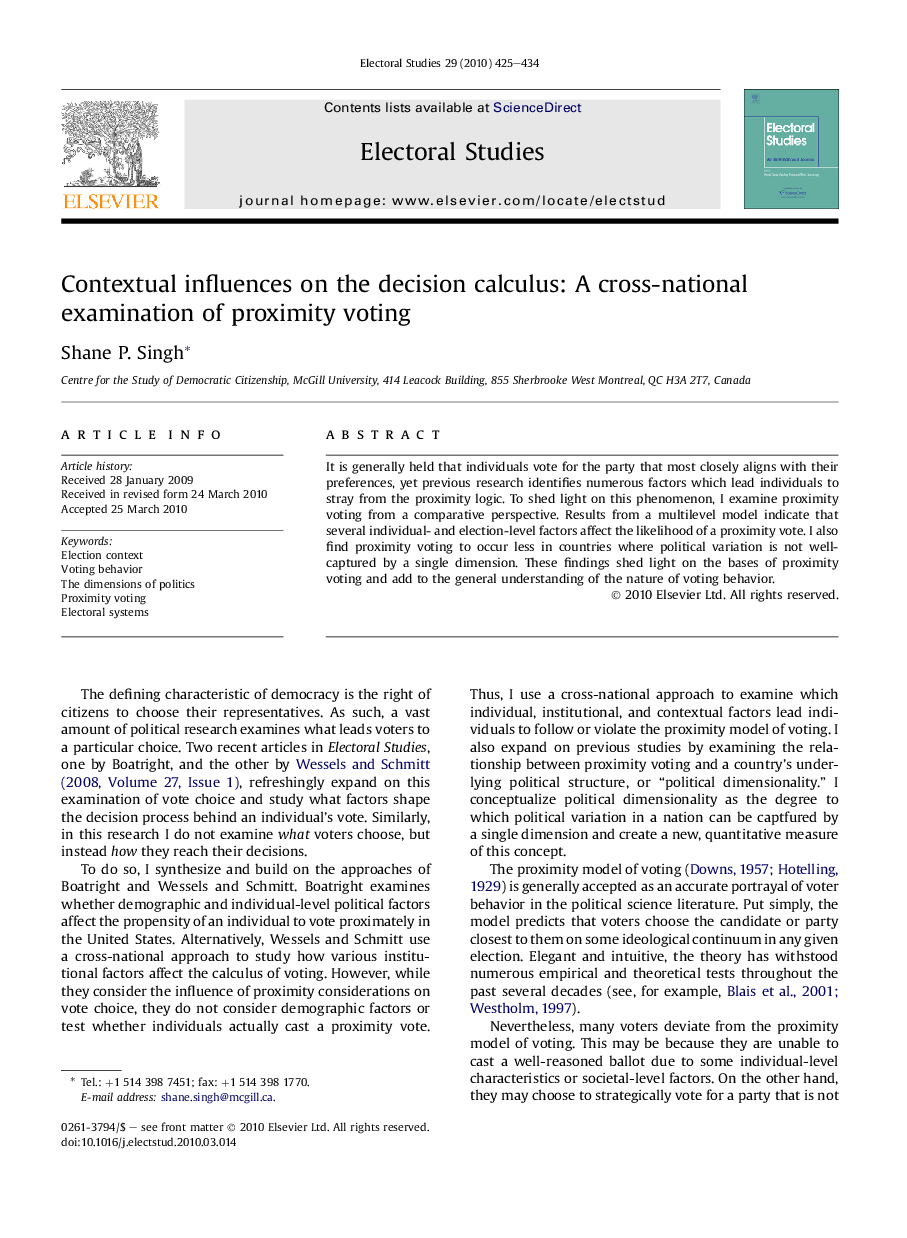| Article ID | Journal | Published Year | Pages | File Type |
|---|---|---|---|---|
| 1051961 | Electoral Studies | 2010 | 10 Pages |
Abstract
It is generally held that individuals vote for the party that most closely aligns with their preferences, yet previous research identifies numerous factors which lead individuals to stray from the proximity logic. To shed light on this phenomenon, I examine proximity voting from a comparative perspective. Results from a multilevel model indicate that several individual- and election-level factors affect the likelihood of a proximity vote. I also find proximity voting to occur less in countries where political variation is not well-captured by a single dimension. These findings shed light on the bases of proximity voting and add to the general understanding of the nature of voting behavior.
Keywords
Related Topics
Social Sciences and Humanities
Social Sciences
Geography, Planning and Development
Authors
Shane P. Singh,
